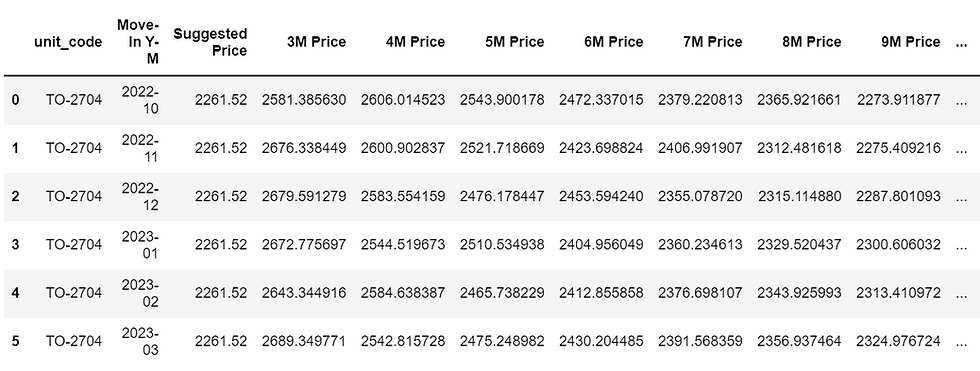Building a Successful Data Analytics Strategy
- michaelwoolfson
- Feb 11, 2022
- 4 min read
The first step for any organization attempting to achieve data and analytics excellence is to create a sound data analytics strategy. This means that you must strategically define your data and analytics goals with your executives. This blog will go over the importance of building an analytics strategy, when you should build it, and how to build it.
Why
The value of utilizing analytics within your organization is clear. It can help you better understand your customers, evaluate your marketing spend, improve your operations through inventory optimization, create better strategies, and overall improve your bottom line. In fact, data driven organizations are 23x more likely to acquire customers, 6x more likely to retain customers, and 19x more likely to be profitable. Having data analytics capabilities is no longer a “nice to have”, but an absolute necessity if you are looking to compete in today’s world – as 90% of corporate strategies will explicitly mention analytics as an essential competency.
When
To put it simply… now. Whether you are just starting a company, are a small organization with less than 50 employees, or a large corporation - it’s important to start building up an analytics strategy from day one. This doesn’t mean you have to go out, hire a full team, and begin implementing machine learning tactics right away. Rather, you can bring a ton of value to your organization by simply acknowledging where you are on your data and analytics journey and building out a strategy to take your organization to the next step.

Whether that means you must start to collect more data, clean and transform the data you are already collecting, or conduct basic analysis and business intelligence on the data you have – its crucial to understand that now is the time to strategize and take your organization to that next step. Not having a strategy is no longer acceptable. At this stage it is quite affordable, your competitors are already working on their strategy, and it’s a very high ROI initiative (the average ROI for enterprises using business intelligence and analytics is an astounding 1300%).
How
There are two main ways to create a data analytics strategy: bottom-up or top-down.

Bottom-up:
You can think of the bottom-up approach as the operational method. Most organizations would start here, as it is probably easier to implement and less time consuming. Using this method, you first see what type of systems and data you possess, you then decide how you can leverage or use this data, looking for connections or information that might help solve problems or tell you where your organization should go from here.
Top-down:
In this method, also thought of as the strategic approach, you first define a business strategy, next you find the desired knowledge you need to make these crucial decisions, then design the data you need to give you this knowledge. You first decide what your organization's main goals are, how you can track the progress of these goals and important activities, how often are you/should you be reviewing these numbers, and what can you do to revolutionize these most important activities.
Although there are pros and cons to both approaches, it is actually best if both of these strategies are used concurrently.
At Advanced Analytics & Research Lab, we recommend building out your strategy in this way:
Data: First, it is essential to get your data organized. We recommend developing a strategy for data collection, storage, and proper utilization. Another important step of this process is data security and privacy, which has to be taken into consideration.
Analytics: Once you have organized your data, you can begin by finding out where your “low-hanging fruit” are. This means area’s where an analytics project is very feasible, not time-consuming, and will have an immediate positive impact on your organization. Once these are taken care of, we recommend building out a 12-month road map detailing which projects to pursue, the associated costs, and the organization value of each of these projects.
Analytics Team: Once you set your strategic initiatives, you can begin hiring and building out, or outsourcing, a team that has the skillset to complete the projects you set out on your 12-month roadmap.
Conclusion
In conclusion, there is no one set way to build out an analytics strategy. The most important thing is that you have one. No matter the size of your organization, it is time to start on your journey towards data and analytics excellence, as it can have vast proven benefits for your company. Once you do have a sound data analytics strategy, executing it becomes the next important step. Who do you hire? When should you hire? How do you build out a team? One way to do this is by outsourcing to an organization like Advanced Analytics & Research Lab – where you get a team of experts for the price of one analyst. This is a great way to bridge the gap until you are ready to hire internally. If you are at the stage where you are ready to hire internally, stay tuned for our upcoming blog where we discuss building an internal analytics team!




Great article! If you're aiming to start a career in data analytics, enrolling in a business analytics course in Ahmedabad is an excellent choice. These programs offer in-depth training and pave the way for incredible opportunities in this dynamic field.